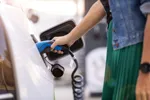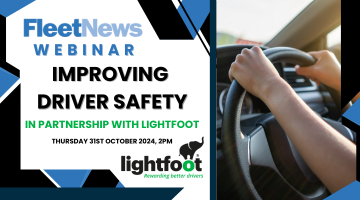There was an 11% increase in the number of drivers under the age of 25 who failed breath tests over the Christmas period.
Of the 48,214 under-25s who were breathalysed during the month-long anti-drink driving campaign, 2,709 tested positive, failed to provide or refused a breath test.
“There is still a significant percentage of young people ignoring the fact that drinking and driving kills,” said the country’s head of roads policing and chief constable Gwent Police, Mick Giannasi.
Neil Greig, IAM director of research and policy added: "We don't want to demonise young drivers, but IAM research has shown that young men are more likely to drink and drive than older motorists.
"These drivers also have a high risk of crashing and there is a perception among their peers that they can 'get away with it'.
"Young people must be convinced that the only way to drive is sober and one way to achieve this is through targeted enforcement," added Mr Greig.
More than 9.000 drivers were arrested by police during the holiday campaign under suspicion of driving while under the influence of either drink and drugs.
“Unfortunately, that there are still people out there who are not getting the message,” said Mr Gianassi.
“Drink and drug drive collisions not only devastate the lives of victims and their families, but they also ruin the lives of the offenders.”
This year’s operation saw more than 27,000 drivers breath tested following a collision. Of these, 7.82% were arrested on suspicion of driving under the influence – up from 6.93% in 2007.
Of the 481 drivers tested using a field impairment test to determine if they were under the influence of drugs, more than a quarter failed and were subsequently arrested.
“It is clear that some drivers still consider themselves above the law and are prepared to put themselves and others at risk,” said Mr Giannasi.
“Driving under the influence of any substance, whether it is alcohol or drugs is not acceptable.
"Alcohol and drugs can impair your ability to judge speed and distances, reduce concentration and delay reaction speed.”
Kevin Clinton, RoSPA head of road safety added: “With more than a quarter of those who took a field impairment test being arrested, it shows we have a long way to go in dealing with the almost hidden problem of drug-driving.”
To help address the problem of young driver risk, a road safety drink-drive expert has developed a DVD learning pack to help new / young drivers understand how not to drink or drug drive.
The Don’t Blow Your Licence – or How not to Drink Drive video has been produced by Roger Singer, the project leader of road safety charity DDE+ .
Mr Singer said: “It’s vital we get young drivers up to speed on this problem, they have little idea about ‘morning after’ and even less about managing drug driving”.
The video’s storyline concerns two young drivers who are convicted “the morning after” a night out drinking.
The DVD pack is already used in many colleges as part of their tutorial package.
Mr Singer is confident that this will help new drivers understand the vital link between the units, or quantity, of alcohol they consume the night before when they socialise, to the period of time they need to allow for these units to clear from their systems, so that they know when they will be alcohol free and therefore fit to drive.
The video runs for 50 minutes, including the time needed to pause it for an interactive Q&A quiz section.
Mr Singer explains: “The video shows drivers how to calculate the units of alcohol they drink, and then work out the hours that must elapse before they can drive.
"The figures are simple to deal with, and you don’t need to be an expert to arrive at the answer.
"Two young actors have been used and we hope this will encourage younger drivers to engage with the issues raised in the storyline.
"Hopefully, it will stimulate them to consider the potentially damaging, and sometimes fatal, results of getting in their cars and driving after drinking or using drugs.
Many young drivers caught the “morning after” often have no idea they are still under the influence of alcohol, and when they wake up, feel perfectly fine and fit to drive.
This leads Mr Singer to comment: “It’s all very well for the government to say ‘don’t drink and drive’, but how much can a person safely consume before driving the next morning, and when are they safe to drive?
"They need to know how to work this out. I strongly believe this is an issue we should be dealing with now, before the figures rise even further.
"The police are extremely vigilant and will seek prosecution, even if the person arrested is simply ‘impaired’ or only slightly over the drink drive alcohol limit.”
The figures for “morning after” convictions are alarming, with almost one in five drivers, receiving bans for a year or more with hefty fines.
Mr Singer identified this particular problem when running his Department for Transport Drink Driver Rehabilitation courses for convicted drivers.
He said: “I would recommend that the government reduces the drink drive limit – at present they say ‘DON’T DRINK DRIVE! but the law says you can - provided you are under the limit – which is impossible to determine, and you are not impaired. It’s got to be one or the other, at present like trying to be a little bit pregnant!"
The video is available for hire to non-profit groups, and can be supplied to colleges as part of their tutorial programme, there is also a commercial version for fleet drivers on the website – www.drinkdrive.co.uk


















Login to comment
Comments
No comments have been made yet.